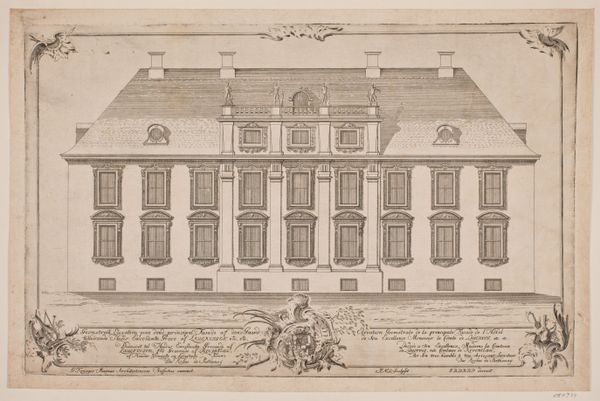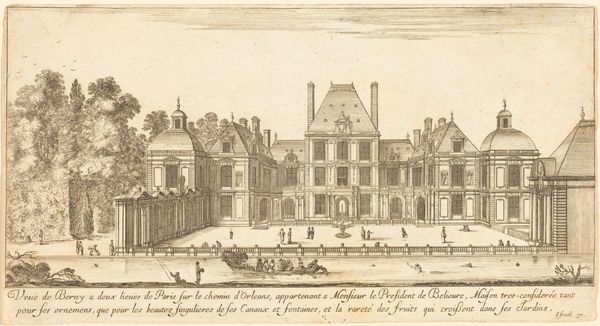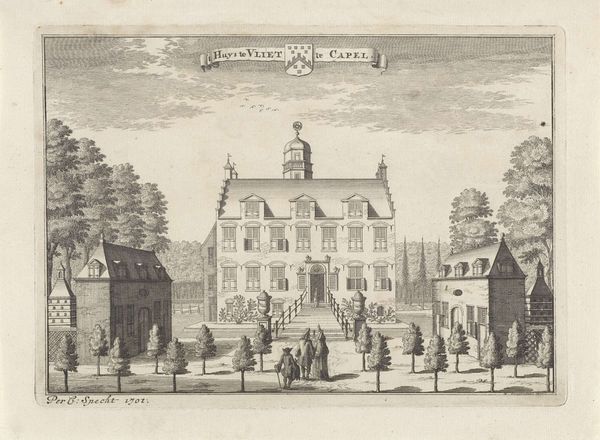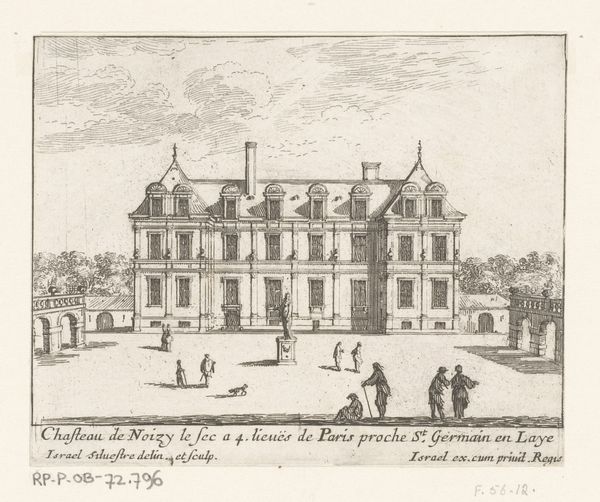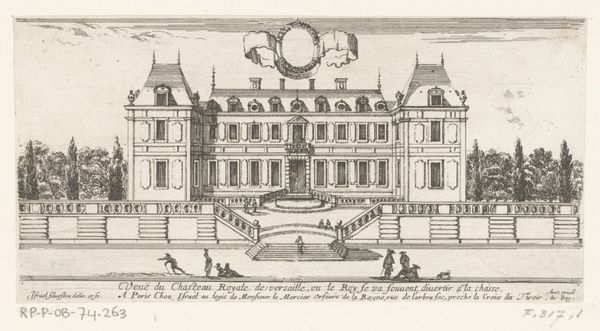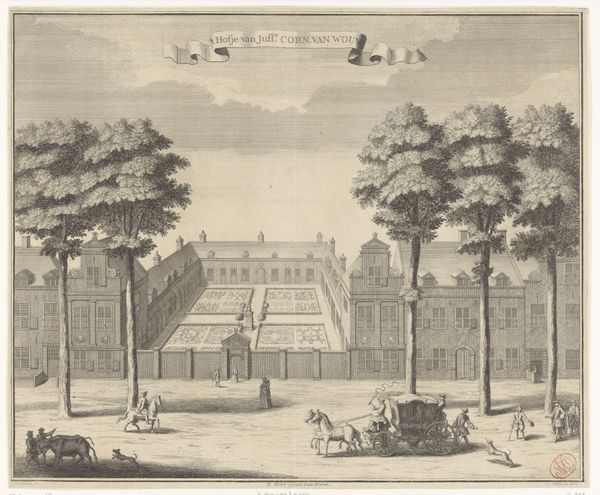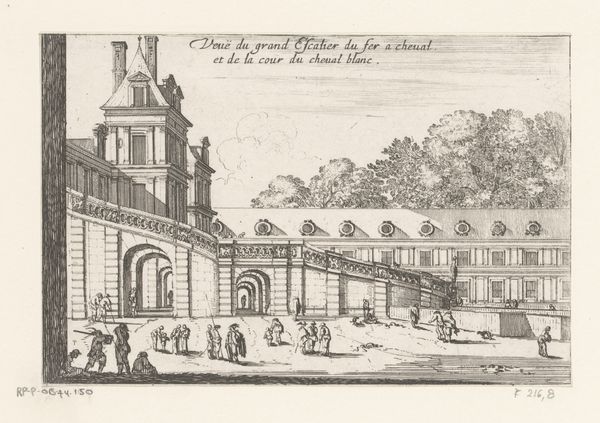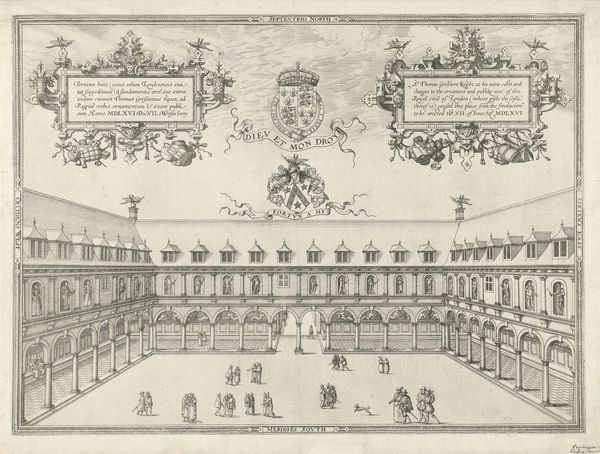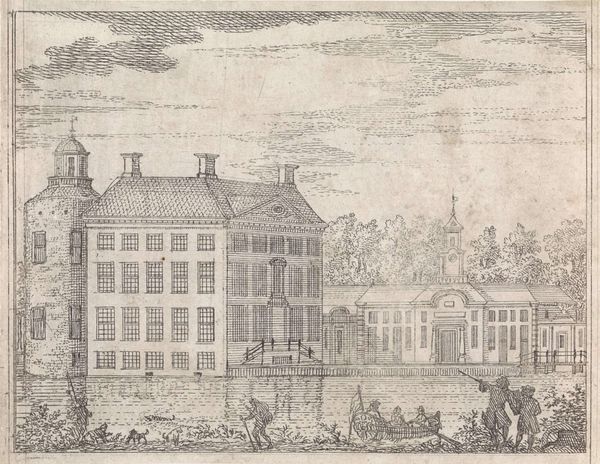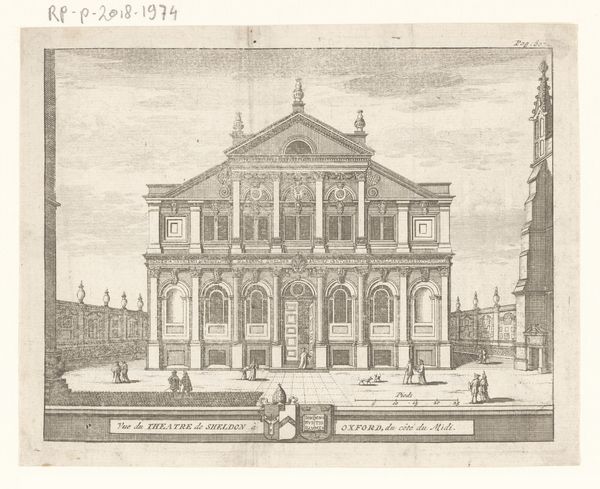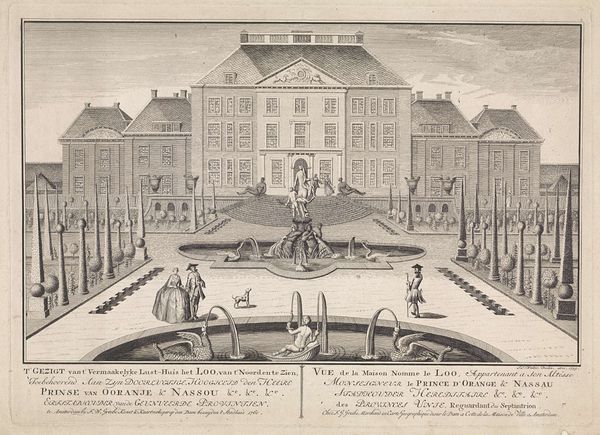
print, engraving
#
baroque
# print
#
line
#
cityscape
#
engraving
Copyright: National Gallery of Art: CC0 1.0
Editor: Here we have "L'Hostel de Vandosme a Paris," a 1652 engraving by Israel Silvestre. The first thing that strikes me is its incredible detail—every line seems meticulously placed, really showing the grandeur of the building, but somehow, it feels a bit rigid and static. How do you see this work? Curator: Formally, I note how Silvestre establishes a hierarchy through line weight and density. The façade's architectural elements are emphasized with thicker, bolder lines. These create a strong contrast to the delicate rendering of the figures populating the foreground. What impact do you think the contrast of scale between building and figure produces in this artwork? Editor: I hadn’t really considered it! Maybe it’s emphasizing the sheer scale of the building against the relatively small figures, which shows their social position, or are they just diminutive compared to the building’s immensity? Curator: Precisely. The linear perspective and symmetry further enforce the building’s authority. Lines converge to draw the eye to a vanishing point; can you see how that emphasis constructs power, stability and rational organization through strictly visual terms? Editor: That makes total sense now. The composition does more than just represent a building; it expresses dominance through careful choices in line and form! It’s pretty brilliant. Curator: It demonstrates the inherent ability of an artist, such as Silvestre, to use form and structure as conveyors of meaning beyond pure representation. This way, architecture can symbolize order and influence through aesthetic components alone. Editor: Well, this new perspective has truly altered how I interpret not only this image, but the symbolic capabilities inherent in a medium like engraving.
Comments
No comments
Be the first to comment and join the conversation on the ultimate creative platform.
